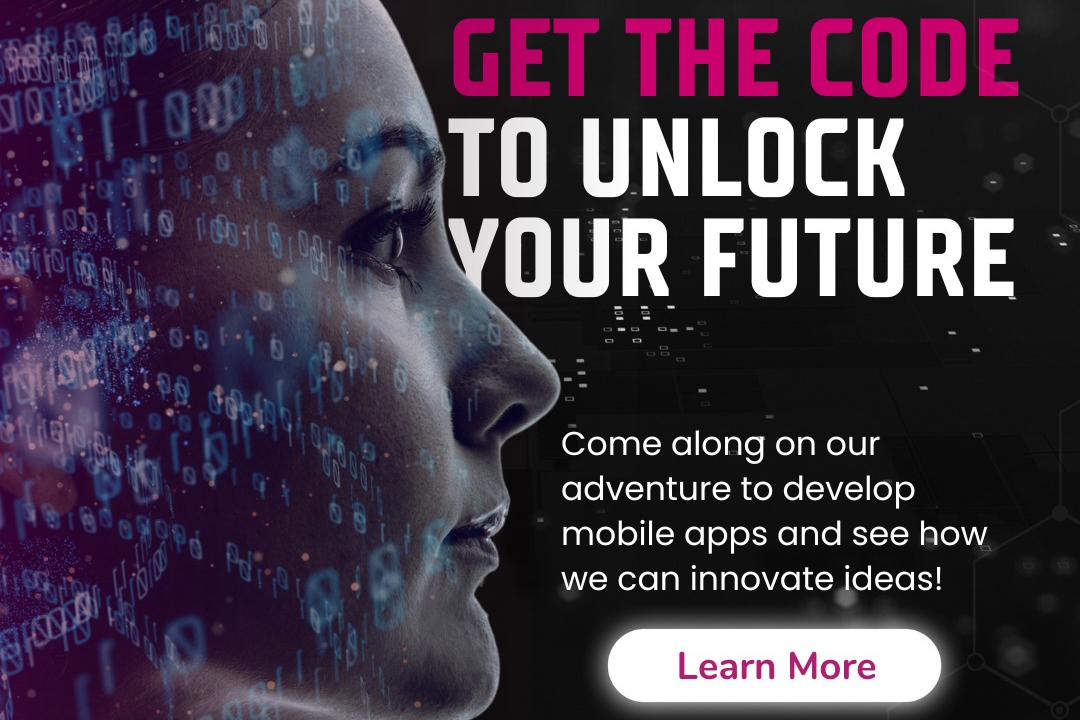Create a Cross-Platform Chat App With React Native And Firebase
Creating a cross-platform chat app with React Native and Firebase involves developing a mobile appli
Create a Cross-Platform Chat App With React Native And Firebase
Creating a cross-platform chat app with React Native and Firebase is a valuable project as it equips developers with the skills to build mobile applications that can seamlessly operate on both iOS and Android devices. This approach not only streamlines development by using a single codebase but also enhances user engagement through real-time messaging features powered by Firebase's robust backend services. By completing this project, developers gain practical experience in integrating front-end and back-end technologies, mastering user authentication, and handling data in real time, positioning themselves well for opportunities in the rapidly growing mobile app development field.
To Download Our Brochure: Download
Message us for more information: Click Here
Creating a cross platform chat app with React Native and Firebase is a valuable project as it equips developers with the skills to build mobile applications that can seamlessly operate on both iOS and Android devices. This approach not only streamlines development by using a single codebase but also enhances user engagement through real time messaging features powered by Firebase's robust backend services. By completing this project, developers gain practical experience in integrating front end and back end technologies, mastering user authentication, and handling data in real time, positioning themselves well for opportunities in the rapidly growing mobile app development field.
Course Overview
The “Create a Cross-Platform Chat App with React Native and Firebase” course offers a comprehensive exploration of mobile app development by guiding learners through the process of building a fully functional chat application that operates seamlessly on both iOS and Android. Participants will master the fundamentals of React Native for creating intuitive user interfaces while leveraging Firebase for real-time database management and user authentication. The course includes hands-on projects that ensure practical experience, covering essential topics such as navigation, state management, and deploying the app to app stores. By the end of the course, learners will be equipped with the skills and knowledge needed to develop scalable, cross-platform applications and understand the integration of modern technologies in mobile development.
Course Description
The “Create a Cross-Platform Chat App with React Native and Firebase” course equips learners with the essential skills to develop a fully functional chat application that works on both iOS and Android platforms. Participants will dive into React Native for building user-friendly interfaces while utilizing Firebase for real-time data synchronization and user authentication. The course emphasizes hands-on learning through engaging projects, covering key concepts such as navigation, state management, and deployment strategies. By the conclusion, learners will have a solid understanding of mobile app development, empowering them to create and launch their own cross-platform applications confidently.
Key Features
1 - Comprehensive Tool Coverage: Provides hands-on training with a range of industry-standard testing tools, including Selenium, JIRA, LoadRunner, and TestRail.
2) Practical Exercises: Features real-world exercises and case studies to apply tools in various testing scenarios.
3) Interactive Learning: Includes interactive sessions with industry experts for personalized feedback and guidance.
4) Detailed Tutorials: Offers extensive tutorials and documentation on tool functionalities and best practices.
5) Advanced Techniques: Covers both fundamental and advanced techniques for using testing tools effectively.
6) Data Visualization: Integrates tools for visualizing test metrics and results, enhancing data interpretation and decision-making.
7) Tool Integration: Teaches how to integrate testing tools into the software development lifecycle for streamlined workflows.
8) Project-Based Learning: Focuses on project-based learning to build practical skills and create a portfolio of completed tasks.
9) Career Support: Provides resources and support for applying learned skills to real-world job scenarios, including resume building and interview preparation.
10) Up-to-Date Content: Ensures that course materials reflect the latest industry standards and tool updates.
Benefits of taking our course
Functional Tools
1 - React Native: This is the core framework used to build the mobile application, allowing developers to write code in JavaScript and render it in a native mobile environment. React Native facilitates the creation of cross platform apps, meaning the same codebase can be used for both iOS and Android devices. Its components are designed to work seamlessly with native mobile functionalities, which leads to enhanced performance and user experience compared to traditional web applications. Furthermore, the hot reloading feature allows real time feedback as changes are made, significantly speeding up the development process.
2) Firebase: Firebase serves as the backend infrastructure for the chat application, providing real time database capabilities. It enables users to send and receive messages instantly, ensuring a smooth and interactive chat experience. Firebase Authentication is also utilized for secure user sign up and login processes, allowing for email/password login, Google sign in, and more. Additionally, Firebase Cloud Messaging can be incorporated to manage push notifications, keeping users engaged and informed about new messages even when the app is not actively in use.
3) Expo: Expo is a toolset that simplifies development and deployment within the React Native ecosystem. It allows developers to run their applications directly on mobile devices using the Expo Go app without extensive configuration. Expo provides a smooth workflow, including easy asset management and an array of pre built components, which accelerates development time. Its support for over the air updates enables developers to push updates seamlessly without the need to resubmit the app to app stores.
4) Redux: Redux is a state management library that helps in managing application state in a predictable manner. In the context of the chat application, Redux can be used to handle user data, chat messages, likes, and any other dynamic content seamlessly across various components. By keeping the state centralized, debugging becomes easier and the flow of data within the app becomes more manageable, making code more maintainable. The integration of Redux with React Native allows for efficient updates to the UI whenever the underlying state changes.
5) React Navigation: This library manages the routing and navigation within the application, offering a smooth user experience as users transition between different screens. With support for stack, tab, and drawer navigation, it enables developers to implement complex navigation flows easily. In a chat app, users might need to navigate between a list of chats, settings, and profiles, making robust navigation crucial for usability. React Navigation also allows customization options for header styles and animations, adding to the overall user experience.
6) GitHub: This platform for version control is essential for managing changes to the application code and collaborating with team members. By using GitHub, developers can track project history, work on separate branches, and merge code efficiently without losing previous versions. It enables easier collaboration within teams, allowing multiple developers to contribute simultaneously and manage updates or fixes in an organized manner. Using GitHub Actions, automatic deployment and testing can also be set up, ensuring that the latest version of the chat app is always fast, reliable, and feature rich.
7) Socket.IO: This library provides real time, bidirectional communication between the client and the server, essential for a chat application. Socket.IO allows users to exchange messages instantly, creating a dynamic and engaging chat environment. It handles events such as user disconnects and reconnects efficiently, ensuring that the chat experience remains uninterrupted. The library can also facilitate features like user presence indicators and typing notifications, enhancing user interaction within the application.
8) TypeScript: Utilizing TypeScript in your React Native chat application adds static typing to JavaScript, reducing runtime errors and improving code quality. TypeScript's ability to define interfaces and types for data structures contributes to better code organization and maintainability. This is particularly important in larger applications, like chat apps, where multiple developers may be working on different features simultaneously. The enhanced tooling and autocompletion provided by TypeScript further streamline the development experience.
9) Styling Libraries: Using a styling library like Styled Components or React Native Elements can significantly enhance the visual appeal and user experience of the chat application. These libraries offer pre built components and consistent design systems that ensure your app looks polished and professional. They simplify the process of applying styles, allowing developers to focus more on functionality while maintaining a cohesive visual identity throughout the application.
10) Axios: For making API requests, Axios is a powerful and flexible library that can be integrated into your chat application to handle data fetching from external services. It simplifies the process of handling requests and responses, including automatic JSON transformation and the ability to intercept requests/responses for additional logic, such as error handling and logging. This capability is crucial when integrating third party APIs or microservices that your chat application may rely on for features like user profiles or chat history.
11 - Local Storage: Implementing local storage solutions, such as AsyncStorage or SecureStore, allows your chat application to persist user data and settings across sessions. This is particularly useful for remembering user preferences, chat histories, or even session tokens for authentication. Local storage enhances user experience by ensuring that users do not lose their conversations or preferences if they close the app or experience connectivity issues.
12) Testing Libraries: Incorporating testing frameworks such as Jest and React Native Testing Library is essential for ensuring the reliability of your chat application. Unit tests, integration tests, and end to end tests contribute to identifying and fixing bugs early in the development process. This practice will ultimately enhance the reliability of the app, providing a better user experience, and ensuring that new features don't unintentionally break existing functionality.
13) Accessibility Features: Integrating accessibility practices into your chat application ensures that all users, including those with disabilities, can comfortably use your app. Implementing features like voice over text, adjustable font sizes, and contrast modes enhances the usability for a wider audience. Adhering to accessibility standards not only improves user experience but also makes your application compliant with legal requirements and promotes inclusivity.
14) Analytics Tools: Incorporating analytics tools such as Google Analytics or Mixpanel can provide valuable insights into user behavior within the chat application. By tracking metrics like user engagement, message frequency, and session duration, you can make informed decisions about feature enhancements and optimization efforts. Understanding how users interact with your app enables you to deliver targeted improvements that can lead to higher satisfaction rates and retention.
15) Push Notifications: Implementing push notifications via services like Firebase Cloud Messaging allows you to keep users engaged with timely updates. Users can receive alerts for new messages, mentions, or updates even when they're not actively using the app. This feature is crucial for chat applications to ensure users never miss important communications and remain actively involved in conversations. Properly configuring push notifications can enhance user experience and drive app engagement.
By integrating these components and features, your chat application can provide a comprehensive, user friendly experience that stands out in today’s competitive market.
Browse our course links : Click Here
To Join our FREE DEMO Session: Click Here
This information is sourced from JustAcademy
Contact Info:
Roshan Chaturvedi
Message us on Whatsapp: Click Here
Email id: Click Here
React Native Navigation Trends You Can’T Ignore
React Native Project Ideas to Boost your Portfolio
Frequently Asked Flutter Questions
Flutter Vs React Native (Brief Mention For Search Cross-Linking))









